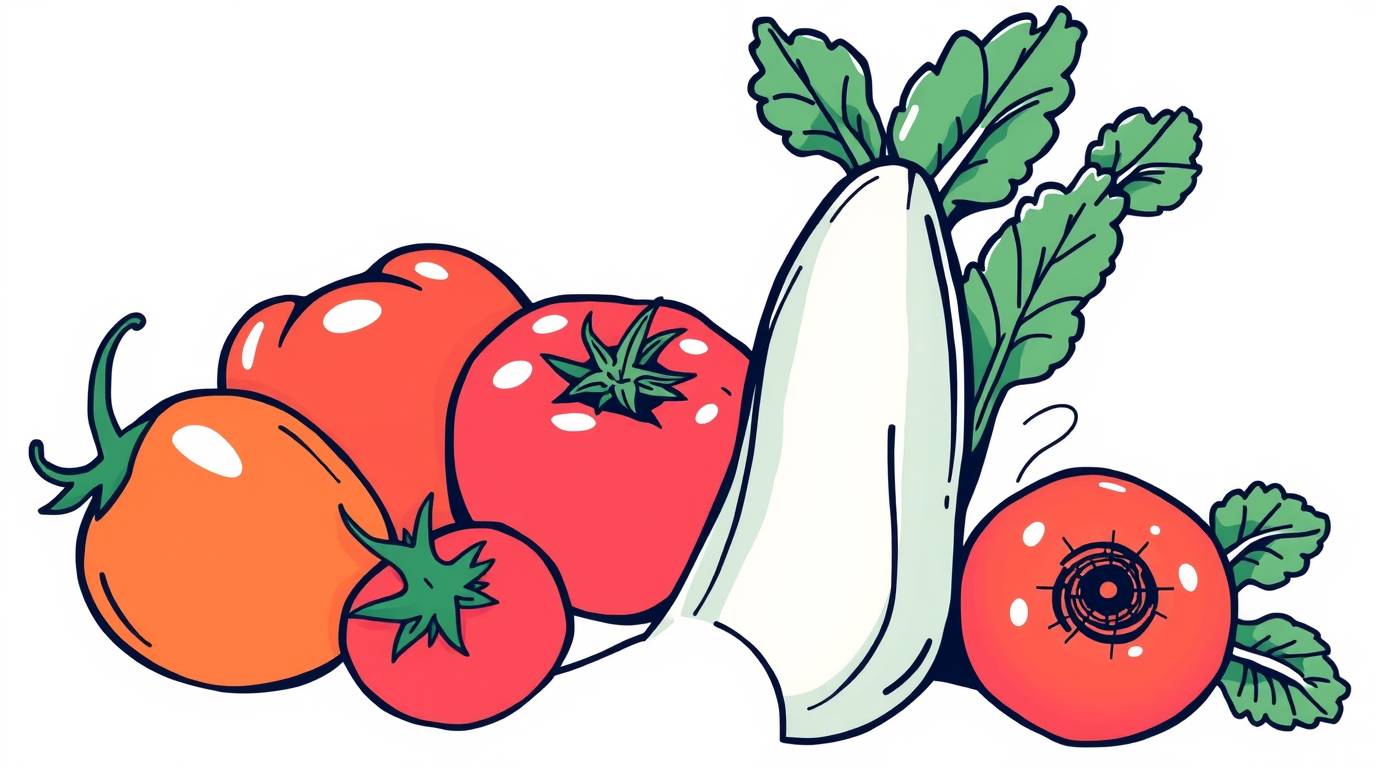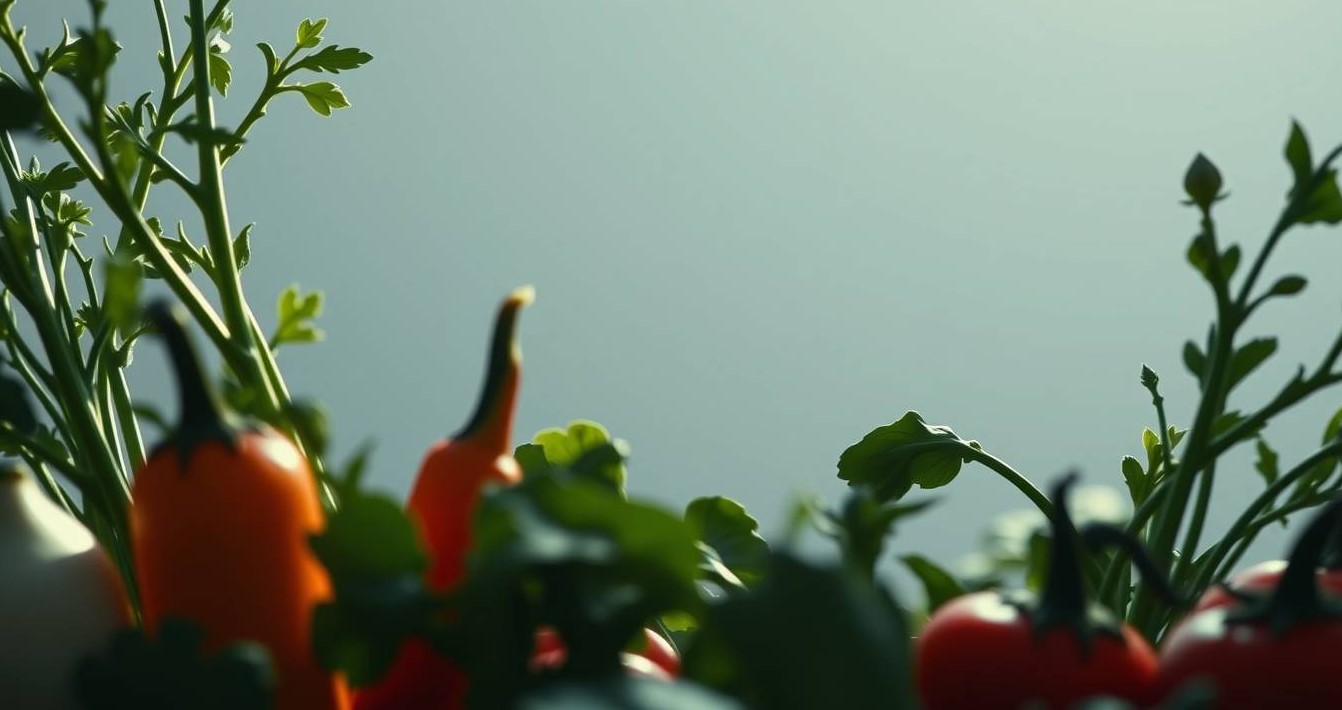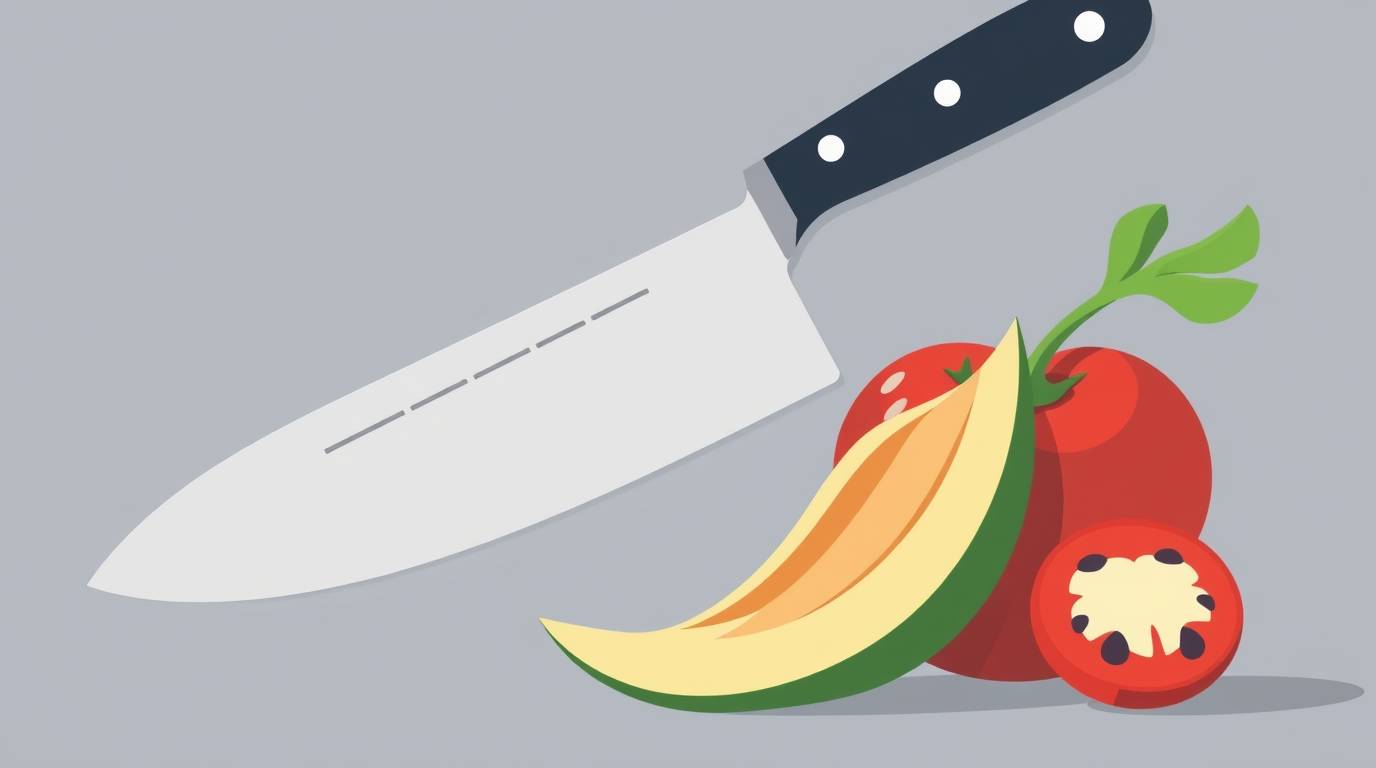Table of Contents
Introduction: The Batch Cooking Revolution
Picture this: It's Wednesday evening. You're exhausted after a long day at work. The thought of figuring out what to cook, chopping vegetables, waiting for something to bake, and then cleaning up the kitchen feels absolutely overwhelming. So you reach for your phone to order takeout—again.
Now imagine a different scenario: You open your refrigerator to find containers of perfectly prepped ingredients, partially prepared meals, and ready-to-heat complete dishes—all made by you, exactly to your taste, and far more affordable than takeout. You can have a home-cooked, nutritious meal on the table in minutes, with minimal cleanup.
This is the batch cooking revolution, and it's changing how busy people approach mealtime.
Batch cooking isn't just about making huge pots of one recipe to eat throughout the week (though that can certainly be part of it). Modern batch cooking is a strategic approach to meal preparation that maximizes your efficiency in the kitchen while minimizing the daily stress of answering "what's for dinner?"
At its core, batch cooking means dedicating focused time—typically 2-3 hours on a weekend—to preparing multiple components or complete meals for the days ahead. But the true art of successful batch cooking lies in creating versatile components that can be mixed, matched, and transformed into different meals throughout the week, preventing the dreaded meal fatigue that comes from eating the same thing day after day.
In this comprehensive guide, we'll walk you through everything you need to know to master the art of batch cooking:
- Setting up your kitchen for maximum efficiency
- Creating a strategic workflow that saves time and energy
- Preparing versatile base recipes that transform throughout the week
- Storing your prepped food for maximum freshness and safety
- Implementing complete batch cooking plans for different lifestyles
- Adapting batch cooking for various dietary needs and preferences
Whether you're a busy professional, a parent juggling family meals, or simply someone who wants to eat well with less daily effort, batch cooking can revolutionize your relationship with food. Ready to transform your weekly meal routine? Let's dive in!
The Benefits of Batch Cooking Beyond Time Savings
While saving time is the most obvious advantage of batch cooking, the benefits extend far beyond just efficiency.
Financial Benefits
Batch cooking can significantly reduce your food expenses:
Reduced food waste:
- Use ingredients completely before they spoil
- Plan meals around what you already have
- Repurpose leftovers strategically
- Buy in bulk for frequently used items
Lower grocery bills:
- Take advantage of sales on staple items
- Buy larger packages at better per-unit prices
- Reduce impulse purchases with planned shopping
- Minimize last-minute convenience purchases
Decreased takeout frequency:
- Have ready alternatives to ordering in
- Satisfy cravings with home-cooked options
- Avoid delivery fees and markups
- Control portion sizes for better value
According to a study by the Natural Resources Defense Council, the average American family of four spends $1,500 per year on food that ends up being thrown away. Batch cooking can reclaim a significant portion of this wasted money.
Nutritional Advantages
Taking control of your weekly meals improves nutrition:
Portion control:
- Pre-portion meals based on your nutritional needs
- Avoid restaurant-sized servings
- Balance macronutrients more easily
- Implement dietary plans more consistently
Ingredient quality:
- Choose the quality level of every ingredient
- Reduce dependency on processed convenience foods
- Control sodium, sugar, and fat content
- Incorporate more vegetables and whole foods
Consistent healthy choices:
- Remove daily decision fatigue around eating
- Preempt unhealthy choices when tired or hungry
- Maintain steady energy with regular, balanced meals
- Track nutritional intake more accurately
A 2018 Johns Hopkins Bloomberg School of Public Health study found that people who regularly cook at home consume fewer calories, less sugar, and less fat than those who cook less or not at all—even if they're not trying to lose weight.
Lifestyle Improvements
Batch cooking can enhance overall quality of life:
Reduced stress:
- Eliminate daily "what's for dinner" anxiety
- Decrease time pressure during busy weekdays
- Lower kitchen cleanup frequency
- Provide security knowing meals are handled
Environmental impact:
- Reduce packaging waste from convenience foods
- Lower energy usage through efficient cooking
- Decrease food waste going to landfills
- Potentially reduce carbon footprint from frequent shopping trips
Family benefits:
- Create opportunities for family cooking involvement
- Teach planning and food preparation skills
- Establish more regular mealtimes
- Accommodate individual preferences more easily
Health management:
- Better support specific dietary needs
- More easily track food intake for medical reasons
- Maintain consistent eating patterns
- Support fitness and performance goals
By reclaiming control of your mealtime, batch cooking creates ripple effects that improve numerous aspects of daily life. The initial investment of time pays dividends throughout your week in ways that extend far beyond the kitchen.
For more information on the long-term benefits of meal preparation, check out our article on how meal planning affects overall wellbeing.
Setting Up for Batch Cooking Success
Before you start your batch cooking session, proper preparation will maximize your efficiency and results.
Kitchen Equipment Essentials
The right tools make batch cooking significantly easier:
Must-have items:
- Large cutting board: Provides ample prep space
- Sharp chef's knife: Speeds up vegetable and protein prep
- Multiple mixing bowls: Allow for organizing prepped ingredients
- Large stock pot (8+ quarts): Perfect for soups, stews, and pasta
- Sheet pans (at least 2): Essential for roasting vegetables and proteins
- Food storage containers: Various sizes in glass or quality plastic
- Kitchen timer: Keeps multiple dishes on track
Helpful but optional:
- Slow cooker/Instant Pot: Hands-off cooking while you prep other items
- Food processor: Speeds up chopping, shredding, and mixing
- Immersion blender: Purees soups and sauces without transferring
- Rice cooker: Frees up stovetop space and attention
- Silicone portion molds: Creates uniform meal portions
Organization tools:
- Labeling system: Masking tape and marker, or washable labels
- Inventory sheet: Tracks what's been prepared
- Meal planning calendar: Maps out when to use prepared items
Kitchen Setup for Maximum Efficiency
Organize your space for workflow optimization:
Prep station arrangement:
- Create distinct zones for different tasks
- Keep cutting board near sink for easy rinsing
- Position trash/compost bin within easy reach
- Arrange ingredients in order of use
- Set up containers for prepped items
Appliance strategy:
- Use oven, stovetop, and countertop appliances simultaneously
- Plan cooking temperatures to batch similar-temperature items
- Position appliances to avoid workflow bottlenecks
- Consider extension cords for temporary arrangement if needed
Cleaning as you go:
- Keep sink filled with soapy water for quick tool cleaning
- Use a "dirty bowl" to collect scraps while chopping
- Have multiple kitchen towels ready for spills and hand-drying
- Pre-empty dishwasher to allow immediate loading
Ingredient Planning and Shopping Strategy
Smart shopping sets the foundation for successful batch cooking:
Inventory assessment:
- Check pantry, refrigerator, and freezer before planning
- Note items needing to be used soon
- Identify staples needing replenishment
- Take stock of available storage containers
Shopping list organization:
- Group by store section for efficient shopping
- Note quantities needed for multiple recipes
- Highlight items that might need substitution
- Include storage supplies if needed
Shopping execution:
- Shop with cooler bags for temperature-sensitive items
- Purchase hardy vegetables that hold up well to storage
- Buy proteins at peak freshness for maximum storage life
- Consider delivery for bulk or heavy items
Ingredient preparation:
- Wash and dry produce immediately upon returning home
- Consider immediate prep of highly perishable items
- Store ingredients properly until cooking day
- Allow time for frozen items to thaw safely
Mental Preparation and Timing
Set yourself up for a smooth batch cooking session:
Schedule blocking:
- Allocate 2-3 uninterrupted hours
- Choose a time when energy levels are high
- Consider breaking up tasks if full session isn't possible
- Allow buffer time for unexpected delays
Pre-session preparation:
- Read all recipes thoroughly beforehand
- Create a cooking timeline with dependencies noted
- Prepare any marinades or doughs the night before
- Queue up entertainment (podcasts, playlists, audiobooks)
Mindset:
- Approach as a productive project, not a chore
- Invite family members to participate in age-appropriate tasks
- Wear comfortable shoes and clothes
- Stay hydrated and plan for breaks
For a complete pre-batch cooking checklist, download our batch cooking preparation guide.
The Batch Cooking Workflow: A Step-by-Step Guide
Developing an efficient workflow transforms batch cooking from overwhelming to manageable. Follow this sequence for optimal results.
Pre-Cooking Tasks (30 Minutes)
Begin with organization before any cooking starts:
1. Set up workspace:
- Clear and clean all countertops
- Empty dishwasher and sink
- Arrange equipment needed
- Place cutting board and knife at primary work area
2. Prep recipe lineup:
- Print or display all recipes
- Review cooking temperatures and methods
- Identify recipe overlaps and efficiencies
- Create consolidated ingredient list if needed
3. Organize ingredients:
- Group ingredients by recipe
- Set out items needing to come to room temperature
- Measure spices into small bowls
- Fill ice bath if needed for blanching
4. Preheat appliances:
- Turn on oven(s) to initial temperature
- Preheat slow cooker if using
- Fill pots with water for boiling
- Heat roasting pans if making multiple batches
Efficient Execution Order (2-3 Hours)
The sequence of tasks significantly impacts efficiency:
1. Start longest-cooking items first:
- Begin stocks or broths
- Start dried beans if not using canned
- Prepare slow cooker recipes
- Begin roasting whole chickens or large cuts of meat
2. Prep ingredients by type, not recipe:
- Chop all onions needed across recipes at once
- Process all garlic at same time
- Cut all vegetables requiring same knife/cutting board
- Brown all ground meats in succession
3. Utilize downtime effectively:
- While items roast: prepare sauces or dressings
- During simmering: chop vegetables for next dish
- While baking: clean already-used equipment
- During inactive cooking: prepare storage containers
4. Multi-appliance coordination:
- Roast vegetables while simmering stovetop dishes
- Use slow cooker while oven is occupied with other items
- Prepare no-cook items during appliance-heavy periods
- Consider sous vide in addition to conventional methods
5. Strategic completion order:
- Finish more perishable items later in session
- Complete cold dishes after hot items to reduce refrigerator warming
- End with items requiring longest cooling before storage
- Save simple assembly tasks for when energy is lower
Cooling and Storage Workflow (30 Minutes)
Proper cooling ensures food safety and quality:
1. Safe cooling practices:
- Cool foods to below 70°F (21°C) within 2 hours
- Divide large batches into smaller containers
- Use ice baths for rapid cooling of soups and stews
- Leave lids slightly ajar until fully cooled
2. Storage preparation:
- Label all containers with contents and date
- Consider adding reheating instructions
- Group similar items together
- Stack efficiently to maximize space
3. Freezer organization:
- Freeze items flat first when possible
- Create an inventory sheet of frozen meals
- Implement FIFO (First In, First Out) system
- Consider color-coding for different meal types
4. Final cleanup:
- Wipe down all surfaces
- Update meal plan calendar with prepared items
- Take inventory of what was accomplished
- Make notes for improvements next session
Sample 3-Hour Batch Cooking Timeline
Here's a realistic example of a comprehensive batch cooking session:
Pre-session (night before):
- Marinate proteins
- Soak beans if using dried
- Prepare dough for bread or pizza if applicable
Hour 1: Heavy cooking initiation
- 0:00 - 0:10: Preheat oven, organize workspace
- 0:10 - 0:30: Chop all vegetables, separate by recipe
- 0:30 - 0:45: Start roasting chicken or vegetables
- 0:45 - 1:00: Begin stovetop components (rice, quinoa, etc.)
Hour 2: Multiple dishes in progress
- 1:00 - 1:20: Prepare soup or stew while other items cook
- 1:20 - 1:40: Mix sauces and dressings
- 1:40 - 2:00: Check/flip roasting items, continue stovetop cooking
Hour 3: Completion and storage
- 2:00 - 2:30: Finish final components, begin cooling early items
- 2:30 - 2:50: Portion and store completed dishes
- 2:50 - 3:00: Final cleanup and organization
For a detailed workflow chart customizable to your cooking plan, check out our batch cooking workflow planner.
Versatile Base Recipes That Transform Through the Week
The key to successful batch cooking is preparing versatile components that can be used in multiple ways throughout the week.
Protein Preparations with Multiple Applications
These protein preparations form the foundation of diverse meals:
Versatile Roasted Chicken
- Base preparation: Whole roasted chickens or bone-in breasts
- Storage: Debone and store meat in portions; save bones for stock
- Transformations:
- Day 1: Sliced with roasted vegetables
- Day 2: Chopped in grain bowls or salads
- Day 3: Shredded for tacos or enchiladas
- Day 4: Added to soup or pasta dish
- Day 5: Mixed into chicken salad
Flexible Ground Meat
- Base preparation: Seasoned browned ground beef, turkey, or plant-based alternative
- Storage: Portion in 1-cup containers
- Transformations:
- Day 1: Tacos or burritos
- Day 2: Pasta sauce with added tomatoes
- Day 3: Stuffed vegetables
- Day 4: Quick chili with beans and spices
- Day 5: Shepherd's pie topping
Multi-Purpose Beans
- Base preparation: Basic seasoned beans (black, pinto, chickpeas)
- Storage: Keep in cooking liquid in larger containers
- Transformations:
- Day 1: Bean bowls with toppings
- Day 2: Mashed for wraps or quesadillas
- Day 3: Added to soups or stews
- Day 4: Formed into veggie burgers
- Day 5: Crispy roasted as snacks
Grains and Starches with Endless Possibilities
Base grains that avoid boredom through varied applications:
Versatile Brown Rice
- Base preparation: Simply cooked with minimal seasoning
- Storage: Cool completely before refrigerating in sealed containers
- Transformations:
- Day 1: Base for grain bowls
- Day 2: Stir-fried with vegetables and egg
- Day 3: Added to soup for heartiness
- Day 4: Formed into rice cakes
- Day 5: Mixed with beans for burritos
Adaptable Quinoa
- Base preparation: Basic cooking with broth for flavor
- Storage: Refrigerate in portioned containers
- Transformations:
- Day 1: Cold quinoa salad with vegetables
- Day 2: Morning porridge with fruit and honey
- Day 3: Added to green salads for protein
- Day 4: Formed into patties for veggie burgers
- Day 5: Base for breakfast bowls with eggs
Strategic Pasta Preparation
- Base preparation: Slightly undercook pasta, toss with olive oil
- Storage: Refrigerate in airtight containers
- Transformations:
- Day 1: Cold pasta salad
- Day 2: Quick pasta with pre-made sauce
- Day 3: Baked pasta casserole
- Day 4: Frittata with pasta and vegetables
- Day 5: Asian-inspired noodle dish
Vegetable Preparations for Maximum Versatility
Prepare vegetables to maintain quality while offering flexibility:
Roasted Vegetable Medley
- Base preparation: Variety of vegetables roasted with simple seasoning
- Storage: Refrigerate in shallow containers to maintain texture
- Transformations:
- Day 1: Side dish with protein
- Day 2: Blended into soup
- Day 3: Added to frittata or omelet
- Day 4: Grain bowl component
- Day 5: Puréed for sandwich spread
Sautéed Greens Base
- Base preparation: Quickly sautéed kale, spinach, or chard with garlic
- Storage: Press out excess moisture before refrigerating
- Transformations:
- Day 1: Side dish with lemon
- Day 2: Added to scrambled eggs
- Day 3: Mixed into pasta dish
- Day 4: Layer in quesadillas
- Day 5: Stir into soup or stew
Raw Vegetable Prep
- Base preparation: Washed, chopped vegetables stored separately
- Storage: Use paper towels to absorb moisture; store in containers
- Transformations:
- Day 1: Vegetable platter with hummus
- Day 2: Quick stir-fry or sauté
- Day 3: Roasted for side dish
- Day 4: Added to cooked grains
- Day 5: Blended into smoothies
Sauce and Flavor Boosters
Multi-purpose sauces that transform basic ingredients:
Versatile Tomato Sauce
- Base preparation: Simple tomato sauce with minimal herbs
- Storage: Refrigerate in jars or freeze in ice cube trays
- Transformations:
- Day 1: Pasta sauce
- Day 2: Pizza base
- Day 3: Soup foundation
- Day 4: Shakshuka base for eggs
- Day 5: Braising liquid for proteins
All-Purpose Herb Sauce
- Base preparation: Blended herbs, garlic, olive oil, lemon
- Storage: Top with thin layer of oil, refrigerate up to 5 days
- Transformations:
- Day 1: Drizzled over proteins
- Day 2: Salad dressing when thinned
- Day 3: Marinade for quick-cooking proteins
- Day 4: Stirred into yogurt for dip
- Day 5: Spread for sandwiches or wraps
Adaptable Spice Blends
- Base preparation: Pre-mixed spice combinations (Mediterranean, Mexican, etc.)
- Storage: Keep in small airtight containers
- Transformations:
- Day 1: Rub for proteins
- Day 2: Added to olive oil for bread dipping
- Day 3: Stirred into plain yogurt for sauce
- Day 4: Sprinkled on roasted vegetables
- Day 5: Added to breadcrumbs for topping
For detailed recipes and more transformation ideas, check out our flavor pairing combinations.
Storage Solutions: Keeping Food Fresh and Delicious
Proper storage is critical to maintain the quality and safety of your batch-cooked meals throughout the week.
Container Selection for Different Foods
The right container makes a significant difference in food preservation:
Glass containers:
- Best for: Reheating, acidic foods, strong-smelling foods
- Advantages: No leaching, stain-resistant, microwave-safe
- Considerations: Heavier, more fragile, higher initial cost
- Recommended for: Saucy dishes, soups, foods to be microwaved
Plastic containers:
- Best for: Freezing, lightweight transport, drop-risk situations
- Advantages: Lightweight, stackable, less expensive
- Considerations: May stain or retain odors, possible chemical concerns
- Recommended for: Dry ingredients, frozen portions, kid lunches
Silicone storage:
- Best for: Freezing in specific portions, space-saving storage
- Advantages: Collapsible, flexible, non-staining
- Considerations: Can retain odors, sometimes difficult to clean
- Recommended for: Soups, stews, portioned entrées
Stainless steel:
- Best for: Long-term refrigerator storage, non-reactive storage
- Advantages: Extremely durable, no leaching concerns
- Considerations: Not microwave-safe, cannot see contents
- Recommended for: Marinated proteins, prepped vegetables
Refrigerator Organization for Batch Cooking
Strategic organization maximizes storage and prevents forgotten food:
Shelf allocation:
- Top shelf: Ready-to-eat items and leftovers
- Middle shelf: Prepped ingredients requiring cooking
- Bottom shelf: Raw proteins in leak-proof containers
- Drawers: Fresh produce at appropriate humidity settings
Visibility strategy:
- Place newer items behind older ones
- Use clear containers when possible
- Implement consistent labeling system
- Consider dedicated batch cooking section
Temperature management:
- Keep refrigerator at 40°F (4°C) or below
- Allow hot food to cool before refrigerating
- Don't overfill refrigerator (blocks air circulation)
- Store temperature-sensitive items away from door
Ethylene management:
- Separate high-ethylene producers (apples, bananas) from sensitive items
- Use ethylene-absorbing products for longer storage
- Store herbs and greens with paper towels to absorb moisture
- Consider produce storage containers with ventilation
Freezer Strategy for Maximum Quality
Freezing extends shelf life substantially when done correctly:
Preparation for freezing:
- Cool food completely before freezing
- Portion into meal-sized containers
- Remove as much air as possible
- Leave headspace in containers for expansion
Packaging methods:
- Vacuum sealing: Best for long-term storage
- Freezer bags: Lay flat to freeze, then stack
- Rigid containers: Leave 1/2 inch headspace
- Foil and plastic wrap: Double-wrap for freezer burn prevention
Labeling system:
- Include contents, date, and reheating instructions
- Consider color-coding by meal type
- Implement inventory tracking system
- Add use-by date (3 months for most items)
Thawing safety:
- Thaw in refrigerator when possible (24 hours ahead)
- Use cold water method for faster thawing (change water every 30 minutes)
- Microwave defrost for immediate use only
- Never thaw at room temperature
Food Safety Timeline
Follow these guidelines for maximum safety and quality:
Refrigerator storage timeframes:
- Cooked poultry: 3-4 days
- Cooked beef, pork, fish: 3-4 days
- Soups and stews: 3-4 days
- Cooked grains and pasta: 3-5 days
- Cooked vegetables: 3-5 days
- Cut raw vegetables: 2-3 days
Freezer storage timeframes:
- Cooked poultry dishes: 2-6 months
- Beef and pork dishes: 2-3 months
- Fish dishes: 1-2 months
- Soups and stews: 2-3 months
- Cooked grains: 3-6 months
- Cooked vegetables: 8-12 months
Quality indicators:
- Check for unusual odors before reheating
- Look for texture changes or excess moisture
- Watch for color changes
- When in doubt, throw it out
For printable food storage guidelines, download our batch cooking storage guide.
Preventing Meal Fatigue: Variety Within Your Batch
Eating the same meals repeatedly leads to boredom. Here's how to create variety while maintaining efficiency.
Flavor Variation Techniques
Simple changes create new taste experiences from the same base:
Sauce transformations:
- Day 1: Basic tomato sauce on pasta
- Day 2: Add olives and capers for puttanesca variation
- Day 3: Mix in cream for rosé sauce
- Day 4: Add Indian spices for curry adaptation
- Day 5: Incorporate beans for chunky vegetable sauce
Spice profile shifting:
- Day 1: Mediterranean herbs (oregano, basil)
- Day 2: Mexican spices (cumin, chili, lime)
- Day 3: Asian flavors (ginger, garlic, soy)
- Day 4: Indian profile (curry, garam masala)
- Day 5: North African spices (harissa, cinnamon)
Acid and freshness boosters:
- Lemon juice and zest for brightness
- Different vinegars for varied acidity
- Fresh herbs added at serving time
- Pickled elements for contrast
- Microgreens or sprouts for fresh finish
Texture Modifications
Changing texture creates entirely different eating experiences:
Adding crunch elements:
- Toasted nuts or seeds
- Crispy fried shallots or garlic
- Quick-pickled vegetables
- Crushed tortilla chips or croutons
- Roasted chickpeas
Temperature contrasts:
- Cold crunchy slaw on hot protein
- Warm sauce on chilled grain salad
- Room temperature components with refrigerated items
- Quick-roasted elements on cold dishes
- Chilled sauce on warm base
Cooking method variation:
- Serve roasted vegetables cold one day, reheated another
- Crisp up previously boiled potatoes in skillet
- Turn leftover rice into crispy rice cakes
- Blend previously chunky components for smooth texture
- Transform soft elements with quick broiling
Presentation Changes
Visual variety reduces perception of repetition:
Serving vessel variation:
- Bowl vs. plate presentation
- Wrapped in tortilla or lettuce
- Layered in glass container
- Composed plate arrangement
- One-pot casual serving
Component arrangement:
- Separated components one day
- Mixed together another day
- Layered vertically for visual interest
- Arranged by color for visual appeal
- Deconstructed presentation of similar ingredients
Garnish strategies:
- Different herb garnishes change perception
- Colorful vegetable brunoise as garnish
- Sauce drizzled vs. sauce on side
- Sprinkled elements for visual texture
- Edible flowers for special touch
Strategic Batch Planning for Variety
Plan your batch cooking specifically to avoid repetition:
Component-based approach:
- Prepare proteins in different forms (ground, whole, shredded)
- Cook grains with different flavor profiles
- Prepare vegetables using various methods
- Create 2-3 different sauce options
- Allow mix-and-match assembly
Partial cooking strategy:
- Cook proteins completely, but prepare them minimally
- Par-cook vegetables for different final preparations
- Create base sauces that can be modified later
- Leave some components for just-in-time cooking
- Focus batch efforts on time-consuming elements
Progressive cooking plan:
- Prepare base components on main cooking day
- Schedule mini cooking sessions mid-week
- Plan for complete meals early in week, flexible components later
- Save quick-cooking items for fresh preparation
- Increasingly transform ingredients as week progresses
Complete Batch Cooking Plans for Different Lifestyles
Ready-to-implement plans customized for various needs and household sizes.
Busy Professional Plan: Emphasis on Speed
Perfect for long workdays with minimal evening cooking time:
Weekend batch preparation:
- Roast 2 chicken breasts and 1 lb mixed vegetables
- Cook 2 cups brown rice and 2 cups quinoa
- Prepare 1 basic tomato sauce and 1 tahini sauce
- Cut raw vegetables for snacks
- Make 1 soup or stew for lunches
Weekday meal plan:
- Monday: Grain bowl with chicken, vegetables, tahini
- Tuesday: Quick pasta with tomato sauce and pre-roasted vegetables
- Wednesday: Salad with quinoa, chicken, raw vegetables
- Thursday: Soup with added fresh greens
- Friday: Stir-fry using pre-cooked rice and remaining vegetables
Shopping list:
- Proteins: 2-3 chicken breasts, eggs
- Vegetables: Bell peppers, zucchini, broccoli, carrots, onions, garlic, salad greens
- Grains: Brown rice, quinoa, pasta
- Pantry: Canned tomatoes, tahini, soy sauce, olive oil, vinegar, spices
- Fresh additions: Lemons, fresh herbs
Time investment:
- Weekend preparation: 2 hours
- Weeknight preparation: 5-15 minutes per meal
Family-Friendly Batch Plan
Designed for households with children and varied preferences:
Weekend batch preparation:
- Brown 2 lbs ground turkey with basic seasoning
- Roast 2 sheet pans of mixed vegetables
- Cook 3 cups rice and 2 cups pasta
- Prepare kid-friendly marinara and separate herb sauce
- Make breakfast egg and veggie muffins
Weekday meal plan:
- Monday: DIY taco bar with prepared components
- Tuesday: Pasta with choice of sauce (plain for kids, herb sauce for adults)
- Wednesday: Grain bowls with customizable toppings
- Thursday: "Breakfast for dinner" with egg muffins and fresh components
- Friday: Homemade pizza using pre-prepped toppings
Shopping list:
- Proteins: Ground turkey, eggs, cheese
- Vegetables: Kid-friendly options (carrots, corn, mild bell peppers), adult preferences
- Grains/Starches: Rice, pasta, tortillas, pizza dough
- Pantry: Taco seasoning, tomato sauce, olive oil, honey
- Fresh additions: Fresh fruit, additional vegetables for serving
Time investment:
- Weekend preparation: 2.5 hours
- Weeknight preparation: 15-20 minutes per meal
Plant-Based Batch Cooking Plan
Nutrient-dense vegan meal prep:
Weekend batch preparation:
- Cook 3 varieties of beans (chickpeas, black beans, lentils)
- Roast 2 sheet pans of seasonal vegetables
- Prepare 2 cups quinoa and 2 cups brown rice
- Make 3 sauce options (tahini, peanut, herbed cashew)
- Prepare energy balls for snacks
Weekday meal plan:
- Monday: Buddha bowl with roasted vegetables, chickpeas, tahini sauce
- Tuesday: Black bean and vegetable enchiladas
- Wednesday: Lentil soup with added fresh greens
- Thursday: Stir-fried vegetables with peanut sauce over rice
- Friday: Grain salad with roasted vegetables and herbed cashew dressing
Shopping list:
- Proteins: Variety of beans and legumes, tofu, nuts, and seeds
- Vegetables: Sweet potatoes, broccoli, cauliflower, bell peppers, onions, leafy greens
- Grains: Quinoa, brown rice, whole grain wraps
- Pantry: Canned tomatoes, coconut milk, nut butters, nutritional yeast, spices
- Fresh additions: Avocados, lemons, limes, fresh herbs
Time investment:
- Weekend preparation: 3 hours
- Weeknight preparation: 10-15 minutes per meal





